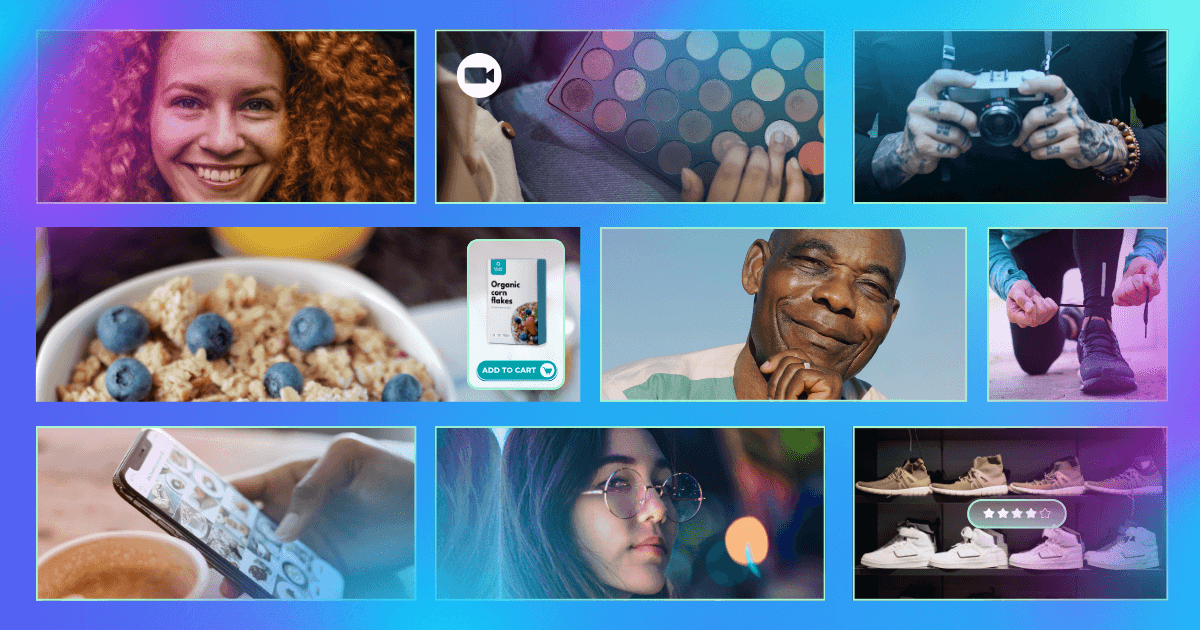April 14, 2025
Curious about how much impact creators can have on your product sales? Let’s talk about Liquid Death, a canned water company. Their limited-edition Mountain Water mini-kegs sold out in just 14 minutes after collaborating with popular podcast host Kylie Kelce.
In the video, Kelce, who is eight months pregnant, casually sips Liquid Death’s Mountain Water from a can at a bar, set to a catchy jingle, “Kegs for pregs,” blending humor and authenticity perfectly in just 60 seconds. It’s a brilliant example of how creators can drive buzz and sales.
So much so that one in three shoppers purchase products based on creator recommendations. According to the latest Bazaarvoice Shopper Preference Report 2025, this trend, driven mainly by Gen Z and millennials, thrives on the trust and credibility creators establish through authentic reviews.
Surveying over 8,000 consumers across six countries, the report reveals interesting insights into how creators shaped consumers’ shopping behavior over the past year. More so, how creators guide shoppers through multiple touchpoints on their buying journey–let’s explore.
The credibility factor in influencer marketing’s effectiveness
The power of creators is undeniable, particularly among younger consumers. Platforms like TikTok, Instagram, and YouTube have become modern-day shopping malls for them.
As many as 56% of shoppers between the ages of 18 and 34 have made purchases based on creator recommendations, compared to only 11% of shoppers aged 55 and older.
This data tells a broader story about shifting consumer purchase decisions. Younger shoppers value recommendations from people who seem like peers rather than polished ads from brands. In contrast, older consumers are often more skeptical, relying on traditional sources of information or personal recommendations from friends and family.
This generational divide makes it clear for brands targeting younger audiences that a well-executed influencer marketing strategy isn’t optional—it’s essential.
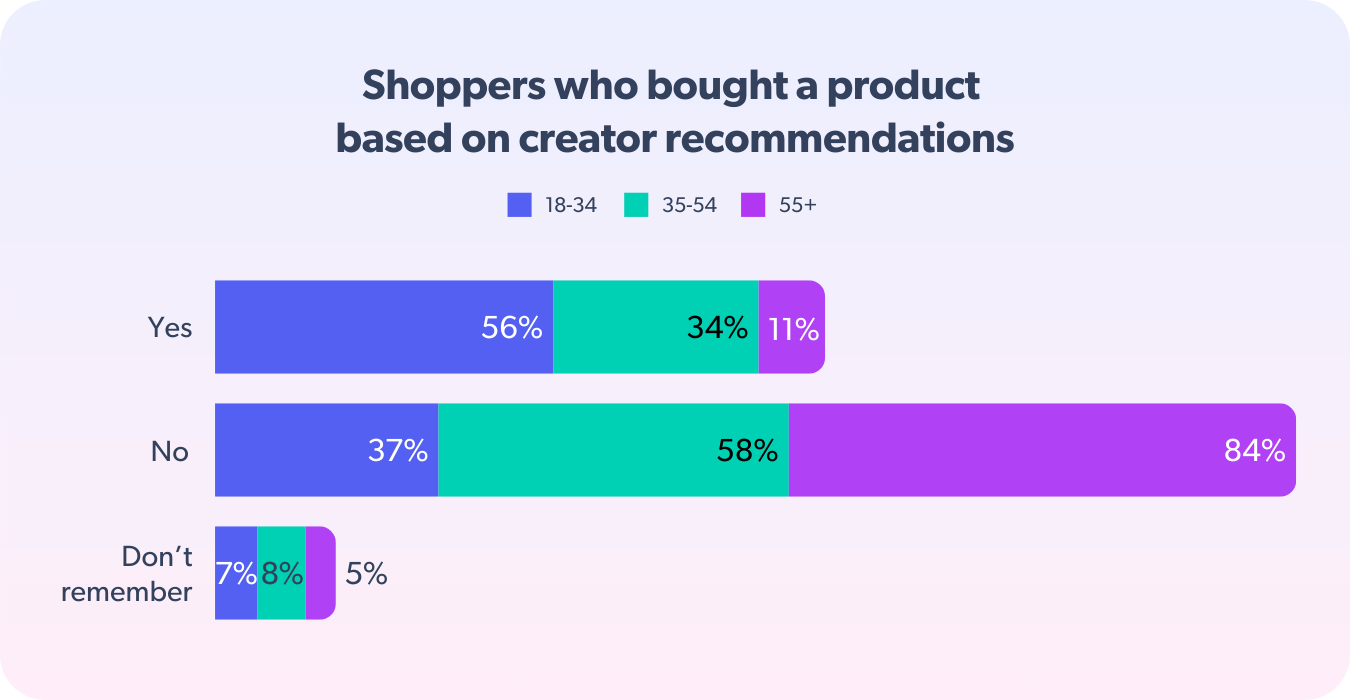
But simply having a creator endorse your product isn’t enough. Shoppers today are savvier than ever. The question brands need to ask is: What makes people trust one creator over another?
Consumers validate creator recommendations when making purchase decisions
While creators can spark interest, most consumers don’t stop there. Instead, they cross-check creator recommendations by doing more research and looking for more reviews from other shoppers before hitting the “buy” button.

This step is even more pronounced for younger shoppers as Gen Z and millennials prefer saving the post for later consideration or asking questions in comments. At least 27% engage with creator content if they share discount codes.
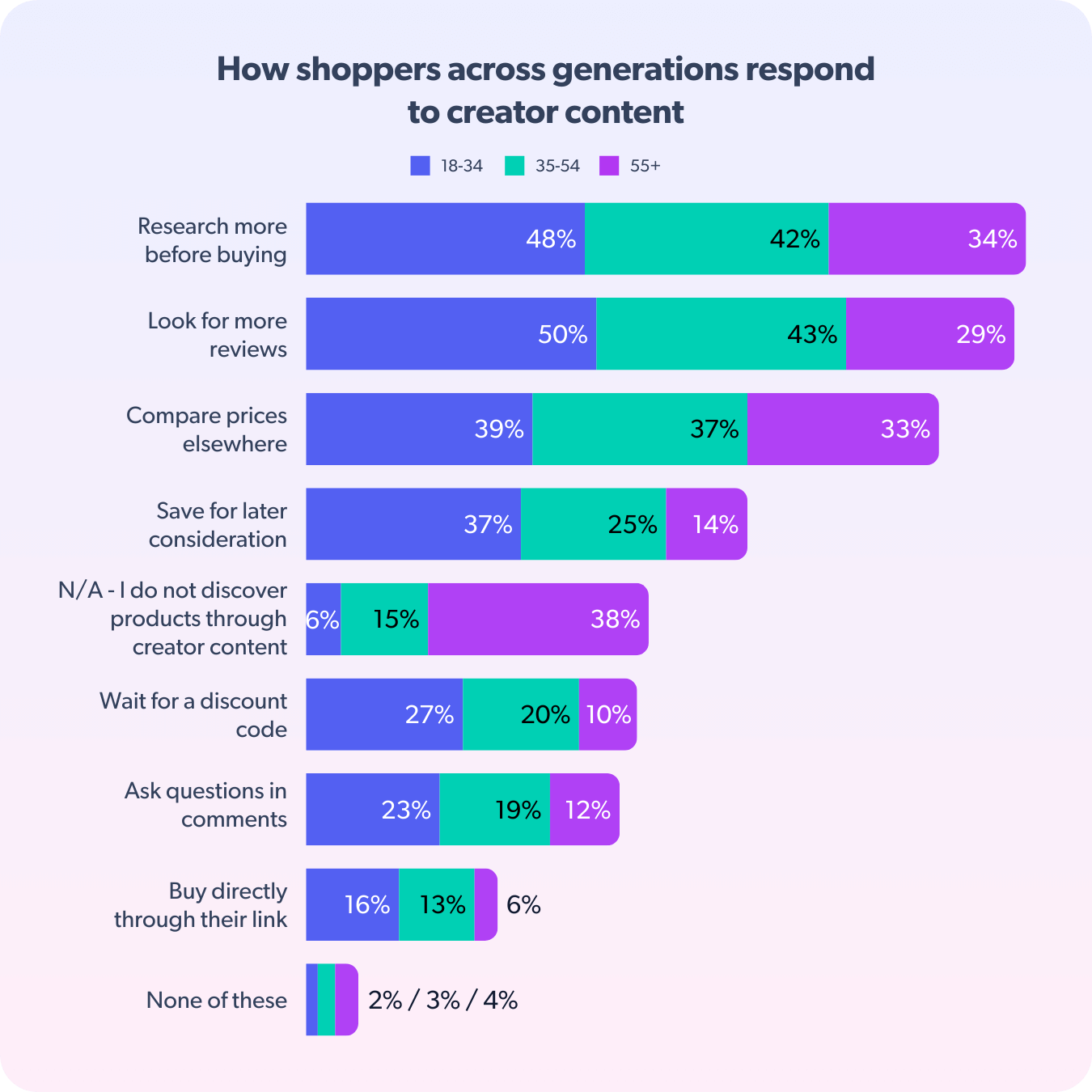
The real impact of creators on purchases
The impact of creators is not just anecdotal — it’s measurable. Among younger consumers, creators influence multiple purchases, with nearly half of Gen Z and millennials making 3-5 purchases in just six months based on creator recommendations.

While this highlights social media influencer impact on youth, it is noteworthy that, among shoppers over 35, at least 50% are ‘influenced’ and have made 1-2 purchases in the last half-year.
Apparel is the most shopped-for category, followed by health and beauty. This trend is especially highlighted among younger shoppers. 53% of Gen Z and Millennials make health and beauty purchases based on creator recommendations, reflecting the strong influence of fashion and beauty creators. Consumers 55 and older are more likely to purchase DIY, home improvement, and hardware products.
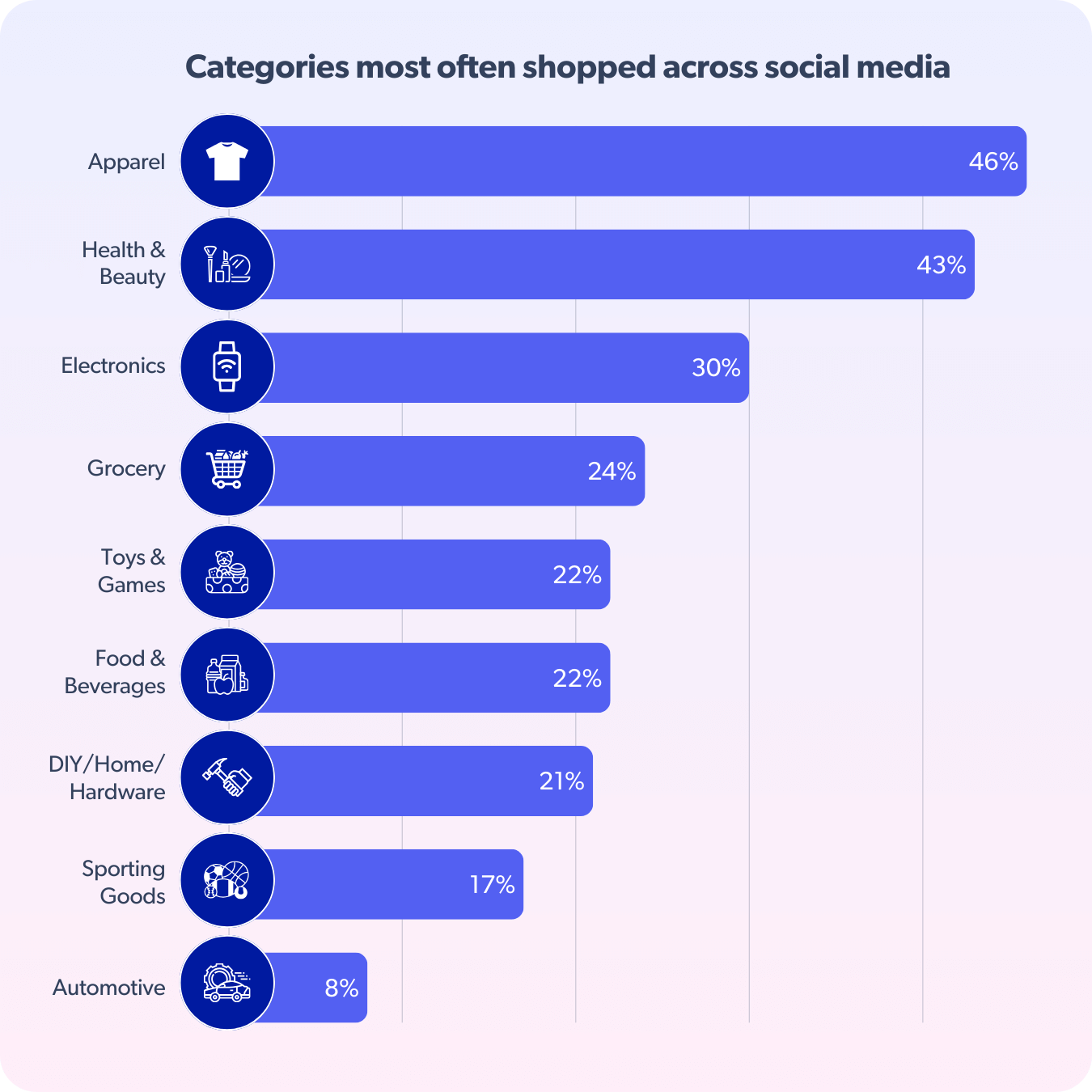
How does the influence of creator content shape the most shopped product categories across different generations?

Combining creator marketing content with robust customer reviews can bridge the trust gap across all age groups. Overall, visually engaging content that showcases real-world use, transformation stories, or trend-driven recommendations resonates with younger shoppers.
The dipstick test for influencer marketing effectiveness
It’s not enough for creators to recommend a product. Shoppers are quick to detect inauthenticity. From exaggerated claims to poorly disclosed sponsorships, trust can break as easily as it’s built. Understanding the difference between what builds and breaks trust is the key to influencing consumer purchase decisions and driving influencer marketing effectiveness.
What builds trust?
Before making a purchase, consumers analyze creator content through a critical lens. They cross-check reviews by other shoppers, don’t necessarily believe in creator-brand collaborations, and even lose faith when reviews are overwhelmingly positive.
The report reveals that 43% of shoppers trust creators who offer a balanced perspective by sharing both the pros and cons of a product. But honesty and authenticity go beyond product critique.
Shoppers also trust creators whose content feels genuine and unscripted. Polished videos might catch attention, but the moments of real-life experiences and relatable reactions are what truly build credibility. Additionally, consumers appreciate creators who focus on providing value rather than just promotions, disclose sponsorships clearly, and share personal stories and experiences.
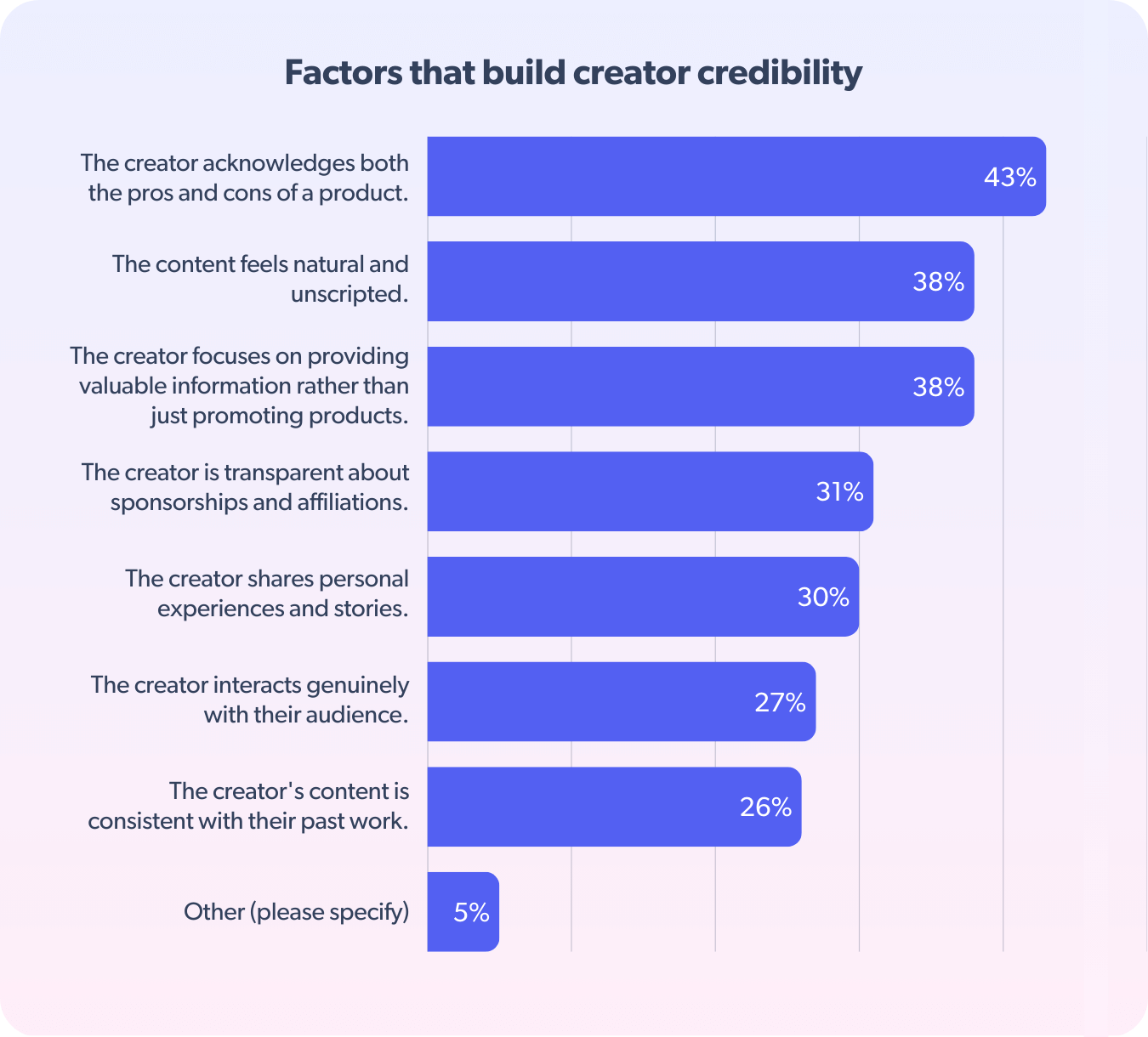
When creators are upfront about brand partnerships and offer well-rounded reviews, they build long-term credibility. For shoppers, it is important to feel like the creator is building a relationship with their audience, not just selling to them. And when brands encourage creators to be upfront, they benefit from long-term loyalty.
What breaks trust?
On the flip side, it doesn’t take much for trust to crumble. Creators can quickly lose credibility if their content feels disingenuous due to excessively promotional content.
Excessively positive reviews are another major concern. At least 44% lose trust when creators refuse to mention a product’s flaws, while 40% grow skeptical when creators seem unfamiliar with what they’re promoting. When enthusiasm feels forced or visuals are excessively polished, consumers see through the facade.
Lack of transparency also raises alarms. Creators lose credibility if they fail to disclose sponsored content. Hidden partnerships damage the creator’s reputation and undermine the brand’s credibility. (Learn more from creators and experts!)

Shoppers prefer creators to state their partnership clearly at the start of their content. Besides, personal stories also make a difference, with many shoppers valuing creators who share their history with a product.
The power of #transparency in influencer marketing
While platform tools like #ad and “Paid Partnership” tags are useful, consumers tend to trust creators more when transparency is woven naturally into the narrative. Brands that encourage creators to be upfront and relatable will foster greater consumer confidence.
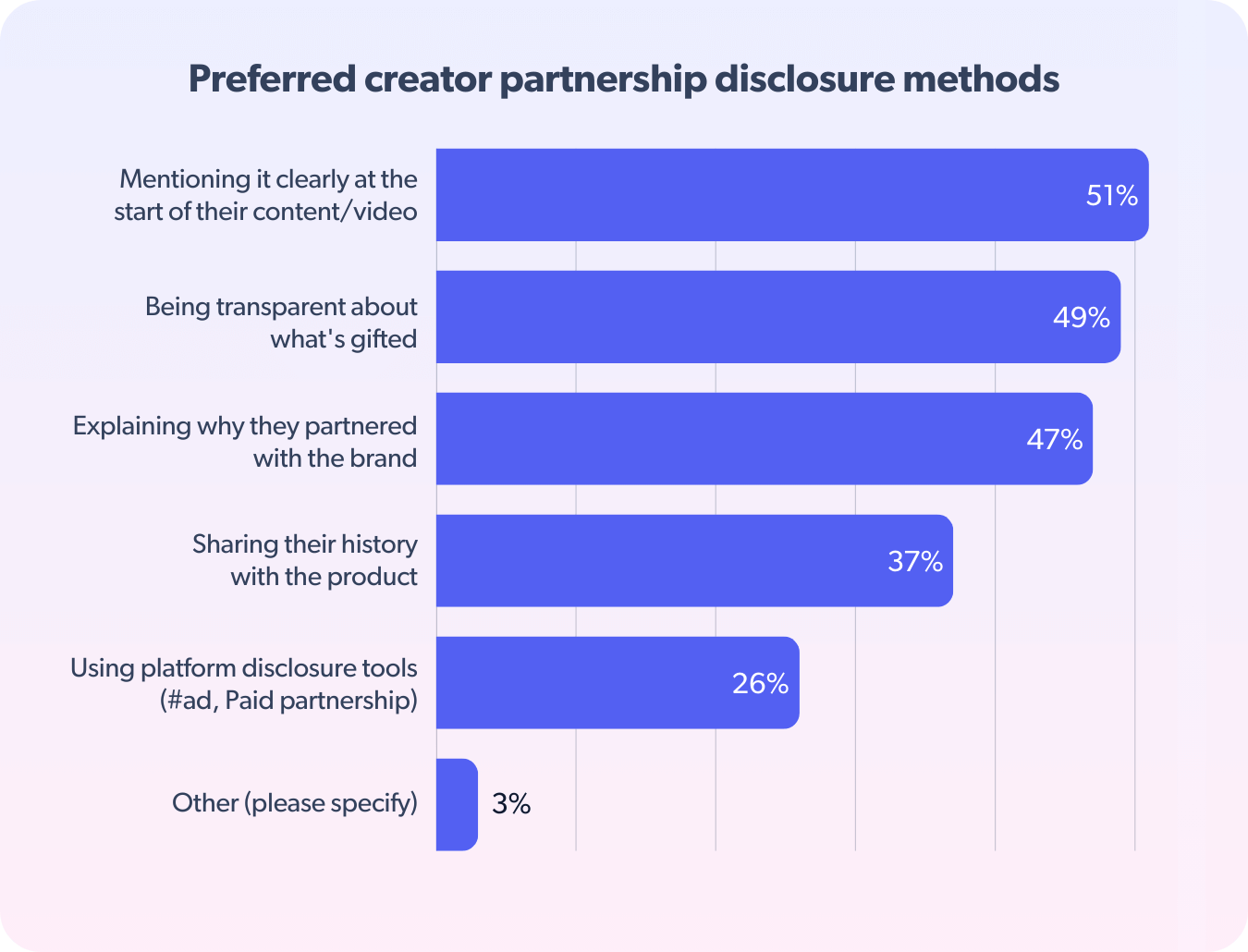
Do’s and don’ts for successful creator partnerships
If you’re a brand looking for an effective influencer marketing strategy, it’s time to rethink your approach. Promotional scripts or glossy campaigns no longer sway consumers. They want stories — honest, relatable, and transparent stories.
Do:
- Partner with creators who genuinely believe in your product: Creators who use and trust your products naturally generate content that resonates, building brand credibility and consumer confidence.
- Encourage authentic creator marketing: Shoppers value honest feedback over exaggerated claims. Focus on creators’ sharing balanced views, including pros and cons reviews.
- Promote full transparency: Whether through verbal acknowledgment or platform tools like #ad, transparency enhances trust, and consumers prefer creators to disclose sponsorships upfront.
- Celebrate creators’ individuality: Audiences connect with creators for their unique voices and experiences. Empowering creators to weave your brand into their storytelling in a natural way fosters long-term brand loyalty.
Don’t:
- Partner with creators who lack experience with your product: Viewers can tell when a creator isn’t genuinely familiar with what they’re promoting.
- Push for exaggerated endorsements: Overly enthusiastic, one-sided promotions are a red flag for shoppers. Allow creators to be candid. Authenticity matters more than perfection.
- Hide sponsorship details: Failing to disclose partnerships damages credibility. Transparent collaborations lead to stronger consumer relationships and brand reputation.
When brands empower creators to be truthful, the results go beyond conversions. The reward is long-term trust, advocacy, and a solid foundation for future partnerships.
Stay credible, connected, and relevant
For brands, the path forward is clear: Choose partnerships that align with consumer values, support authentic content marketing, and encourage creators to offer genuine perspectives. The brands that thrive are the ones that value honesty over hype.




